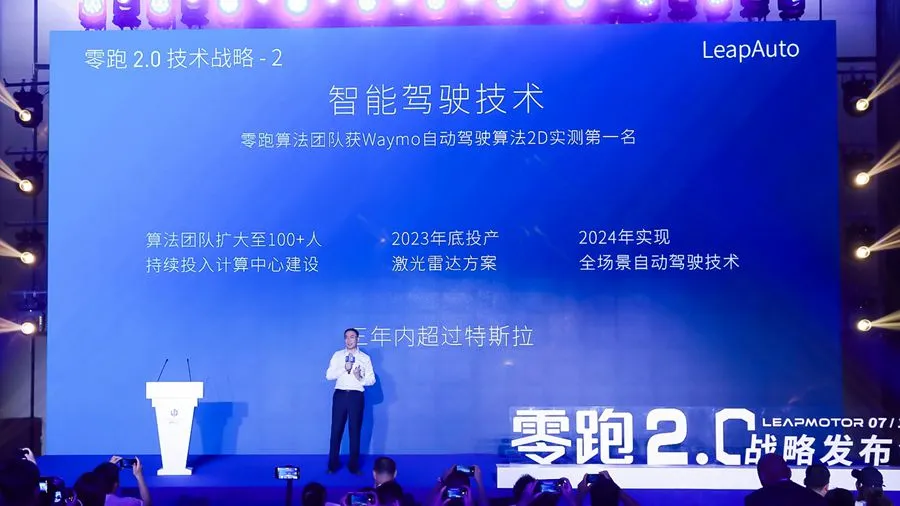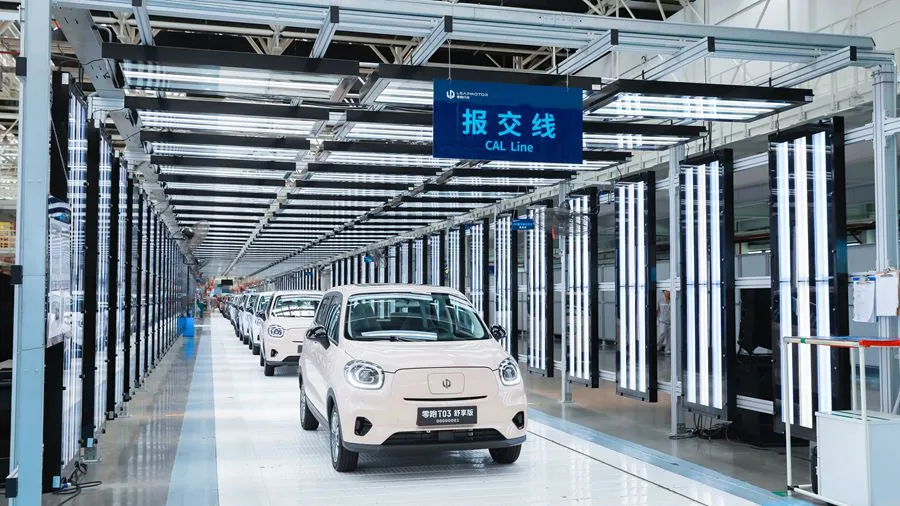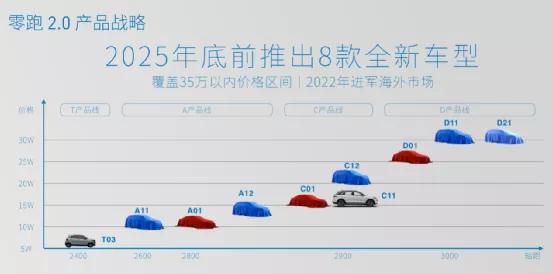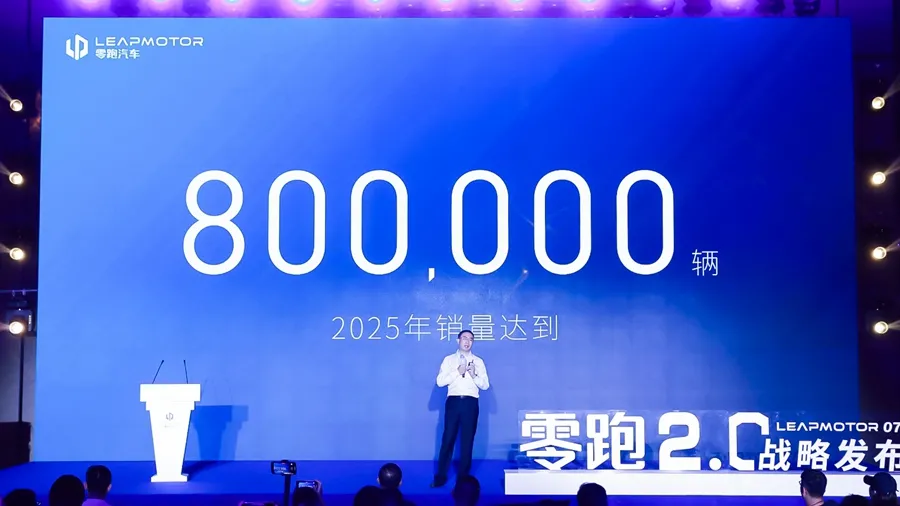Three Years to Surpass Tesla!
After completing a ¥4.5 billion pre-IPO funding round, ZeroRun founder, Zhu Jiangming released a bold statement.

For most people, ZeroRun is still a relatively unknown car brand. This automaker startup was established in 2015 and is based on Dahua Technology’s advantage in the security industry.
In 2020, ZeroRun delivered its first 10,000 cars, and in 2021, it stabilized sales at 3,000 vehicles per month.
Although ZeroRun started late, it has not run fast. Now it has released a bold statement, “Three years to surpass Tesla,” which is sure to be questioned. After all, many car companies have said the same thing before ZeroRun and have been exposed.
There is no shortage of European auto giants and Chinese local automakers trying to surpass Tesla, and PPT carmakers such as Youxia Motors are no exception.
What will ZeroRun do to face this challenge? What are the future plans for ZeroRun, which has been established for six years?
In the scorching July heat, ZeroRun held a strategic release event in Jinhua, Zhejiang, announcing the beginning of the ZeroRun 2.0 era.
Billion-yuan Cost to Buy Car Manufacturing Qualifications
Almost all of ZeroRun’s important moments occur during the press conference held in Jinhua, Zhejiang. This is also where the ZeroRun AI factory is located.
In 2017, ZeroRun debuted its brand in Jinhua, and in 2021, it completed the off-line production of its first mass-produced car here. It took four years for ZeroRun from brand debut to mass production car off-line in their own factory, which is not considered fast compared to head automaker startups.

However, ZeroRun does not start late. As early as the spring of 2017, ZeroRun began constructing their factory and completed the off-line production of the car body in autumn 2018.
In terms of factory construction speed, ZeroRun is not slow. However, the slow part of ZeroRun is obtaining car manufacturing qualifications.
When ZeroRun founder Zhu Jiangming started making cars, he was unclear about many rules in the auto industry, including the need for access qualifications for car production and sales.
Therefore, although ZeroRun has certain forward-looking abilities in product technology planning, it is still lagging behind head automaker startups in executing specific implementations.
When the first car model, S01, was released, ZeroRun chose an OEM model, with Changan Auto as their OEM partner. However, Changan Auto was an extremely unreliable choice, and since then, they have gone bankrupt.
OEM car manufacturing is only a temporary solution, and building their factory was ZeroRun’s original plan. But getting the car manufacturing qualifications disrupted ZeroRun’s plan and made them pay a considerable amount of tuition fees.After three years since the start of construction of LI’s Zhejiang Jinhua factory, the qualification issue was finally resolved. In 2020, LI acquired the qualification for car production by acquiring Fujian Xinfuda Automobile Industry Co., Ltd., at a cost of billions of RMB.
With the attainment of the car production qualification, LI accelerated its development. On July 13th, the Ministry of Industry and Information Technology released a notice announcing that the LI C11 model produced by the LI Jinhua AI factory had entered public inspection as part of the 346th batch of announcements for road motor vehicle production enterprises and products. The C11 is LI’s third model, with a body size of 4750×1905×1675mm and a wheelbase of 2930mm, positioned as a mid-size SUV.
The LI C11 has a range of 600 kilometers and adopts a 90kWh power battery pack. With a top-end subsidy selling price under 2 million RMB, it has high cost performance. During the blind order period, the number of orders for the C11 model exceeded 4,000, which is a good result among new car-making forces.
After obtaining the factory qualification, LI’s delivery speed also accelerated. As of June 2021, LI has delivered over 20,000 vehicles, with sales breaking through 10,000 units in the first half of this year.
At the press conference, Zhu Jiangming stated that LI is expected to have orders for 56,200 vehicles in the second half of this year, with sales of 48,000 and total sales of 62,400 for 2021.
The qualification for car production affects the production and sales of automobiles, but has not affected LI’s technological development. In the process of waiting for the car production qualification, LI announced the development of its self-developed autonomous driving chip, the Lingxian 01, and has made certain progress in software algorithms. It won the 2021 Waymo autonomous driving algorithm competition, ranking first in the 2D algorithm testing category.
Zhu Jiangming said LI aims to build cars with soul. The essence of what Zhu Jiangming means by soul is the self-developed core technology. Since its inception, LI’s strategy has been to develop all its core technologies in-house, including the battery pack, which is completed by LI from cells, modules, PACP, and BMS. LI’s three-motor electric power system was established at the time of the company’s founding. Additionally, LI’s intelligent network connection, autonomous driving, and vehicle interconnection systems are all independently developed.
LI’s Jinhua factory showed the media a three-electric production line, which can produce power battery packs and drive motors. LI plans to achieve automated distribution from the three-electric production floor to the final assembly floor.This is an attitude that proves that the attitude of making cars in Leapmotor is upright and insists on self-research and production of core components.
After obtaining the automobile qualification and running through the industrial chain, Leapmotor is entering the 2.0 era.
The 2.0 era planned by Zhu Jiangming for Leapmotor is the development strategy for the next five years, focusing on technology, products, and users.
On the technical level, Leapmotor has set many goals:
-The algorithm team will be expanded to over 100 people;
-The lidar scheme will be put into production by the end of 2023;
-The full-scene automatic driving technology will be realized in 2024;
-The Leap AI intelligent cabin will realize AI emotional interaction, AI self-learning, and active service functions;
-The Leap Power three-electric system will create the largest power 110 kW direct-drive extended-range oil-cooled generator;
-The research and development of a 300 kW high-power silicon carbide 800V controller;
-CBC battery body integration technology.
These goals are not just mere words. Leapmotor plans to achieve them one by one within three years.

In terms of products, Leapmotor plans to launch eight car models at a speed of two car models per year, covering the price range below 350,000 yuan by the end of 2025. Leapmotor plans to enter overseas markets in 2022.
Zhu Jiangming said at the press conference that the wheelbase of the eight products ranges from 2.6 meters to 3.1 meters, covering the A, C, and D product lines. In the future, Leapmotor’s products will emphasize intelligence. Regardless of the type of product, it will be fully equipped with intelligence to improve user experience and provide higher added value.
At the user level, Leapmotor plans to win user reputation with high-value-added products and high-quality services. Currently, Leapmotor has created the Leapmotor community through the mobile APP, which will build a social system around users and interact with users.
800,000 units sold in 2025
The ultimate goal of the Leapmotor 2.0 era is to sell 800,000 units by 2025.

Just three months ago, Wu Baojun, the CEO of Leapmotor, gave a figure of 600,000 units in an interview with the media. In just three months, Leapmotor raised the sales target by 200,000 units.
Leapmotor has set a big goal for the 2.0 era, exceeding Tesla within three years and selling 800,000 units in 2025. As Leapmotor is about to go public, setting goals is understandable, but they should continue their low-key and pragmatic style of making cars with technology.
Setting goals may alleviate immediate problems, but is by no means a long-term solution.Zero Run has been releasing various plans in Jinhua, but its problem-solving speed is indeed slow. In the rapidly developing new energy vehicle industry, Zero Run needs to speed up while dreaming big and providing solutions.
For example, with only one planned production capacity of 50,000 vehicles and expandable to 250,000 vehicles in the Zhejiang Jinhua AI factory, how can Zero Run ensure future production capacity supply in the coming years?
Furthermore, despite making harsh comments on Tesla, Zero Run’s accumulation of autonomous driving talents is not strong enough. Its autonomous driving algorithm team consisting of just over 100 people is only a fraction of a team of Tesla engineers.
Also, with insufficient computing power of the Ingenic X1 at 8.4 TOPs with a dual-core chipset, how can it support advanced autonomous driving features?
With many doubts, can Zero Run and Zhu Jiangming deliver a satisfactory answer in the era of Zero Run 2.0? We remain optimistic, but also skeptical.
However, dreams must be pursued. What if they come true?
This article is a translation by ChatGPT of a Chinese report from 42HOW. If you have any questions about it, please email bd@42how.com.